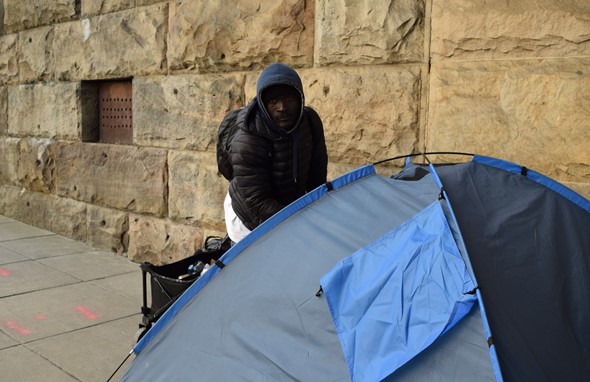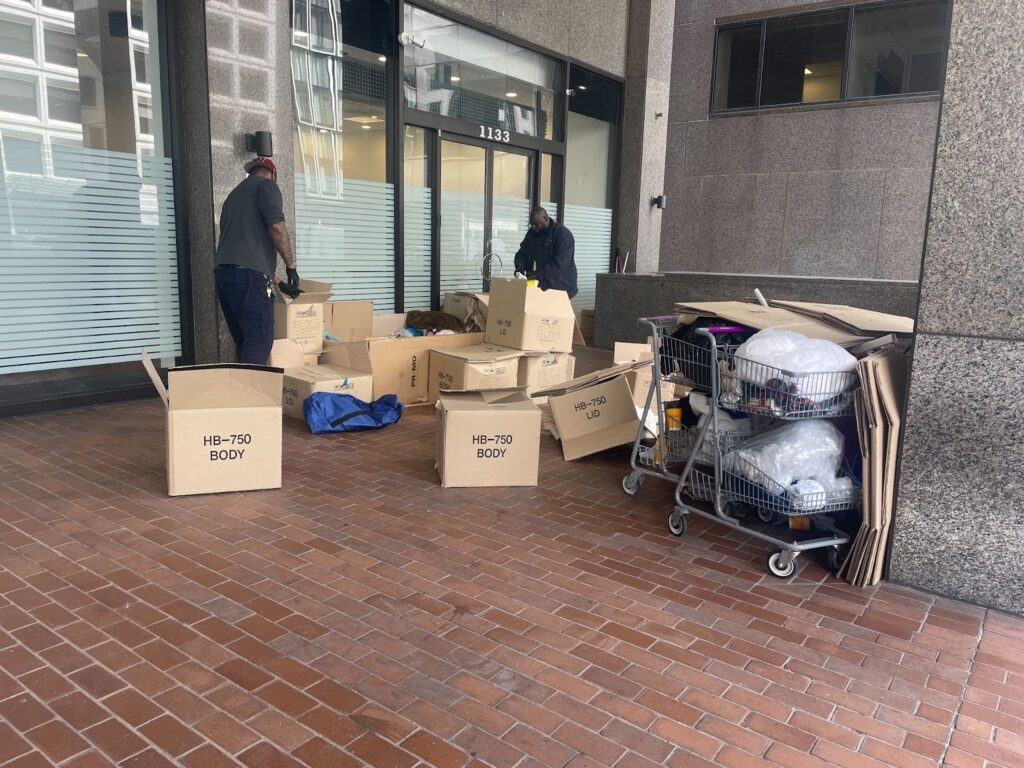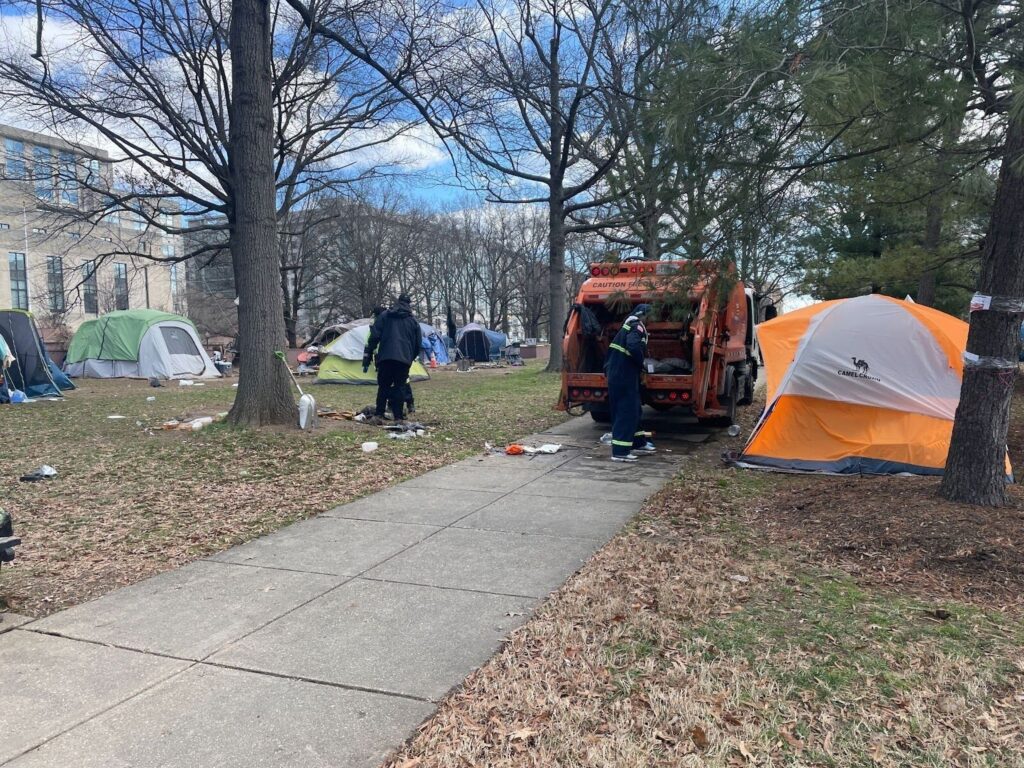Andre Justine had been living on 1st and H Street NE for six months, but that morning, his tent was thrown away, displacing him from his home and community. On Thursday, Justine, along with several others, had their personal belongings and tents discarded by the city as a part of a scheduled “full cleanup” of the encampment organized by DMHHS.
“I didn’t have time to move all of my stuff,” Justine said, “so they took it away and threw it away.” At the time of the cleanup, Justine was speaking with his doctor, trying to get his medication.
“I didn’t have anywhere else to put it,” Justine added, “It had to be moved because they had to put the fence there.” In order to make room for a new construction project, city workers discarded three tents. Officials arrived at 9 a.m. and began the cleanup at 10 a.m.
The Office of the Deputy Mayor for Health and Human Services did not initially provide any comments in response to Street Sense Media’s requests.
Residents also said they were not aware of what this cleanup entailed. “I knew it was happening today, but I didn’t know they were going to throw his stuff away,” said Aiesha Allen, resident of the encampment, “All I was aware of was that they were supposed to be welding the door.”

This encampment cleanup marks the 18th since the start of the new year. These sweeps often leave residents with nowhere else to go. Many say they want to avoid shelters amid the COVID-19 pandemic in addition to other personal reasons. At the start of the pandemic, the city halted encampment cleanups as the CDC recommended, but they have slowly started picking back up again. While the Department of Health and Human Services has taken steps to improve the hygiene of encampments, such as installing portable restrooms and handwashing stations around some encampment areas, these sweeps are still considered dangerous in the context of the pandemic.
As of March 22, 2020, the Center for Disease Control has recommended pausing encampment sweeps, since outdoor settings and less contact can lower the risks of contracting COVID-19. The layout of encampments can also help facilitate social distancing and create overall safer conditions in comparison to indoor congregate settings. If individuals are uprooted and dispersed throughout the city, this can lead to further disease spread and disrupt individual’s access to essential services, according to the Centers for Disease Control. As of March 5,, 519 individuals living in shelters had tested positive for COVID-19.
h Jersey and o and a resident dmhhs threw away all his things Thursday he would like to purchase new mattress tonight before walmart closes please if you can cash app $20.00 handle $domodee12
— Reginald Black (@Reggieblack227) March 6, 2021
Some residents, however, said they wanted the cleanup. Some took the initiative to call DHS and Pathways to Housing and ask for a removal of the trash in front of their tents. The Office of the Deputy Mayor for Health and Human Services (DMHHS) coordinates both trash-only cleanups, in which residents do not have to move their tents or belongings, and full encampment cleanups, which require residents to remove their belongings. According to the District’s updated COVID-19 protocol, DMHHS tries to convert scheduled “full cleanup engagements” to “trash-only engagements” as much as possible.
Residents camped on 1st and H street said they started to experience a prolific rat problem, affecting their health and wellbeing. “We wanted the cleanup because there was too much trash, it looked terrible here,” said Laura Morgan, a resident of the encampment. “So we wanted the trash gone because the rats were everywhere.”

Residents were further dealing with broken street lights.The entirety of the block became pitch black at night, placing residents in immediate danger as soon as the sun set. “We called the city because they had the lights off on this corner all the way down to the overpass. And then from there on, the lights were on,” said Morgan, “His cousin [another resident of the encampment] was murdered here about 3 weeks ago. And we said [to the city] ‘you guys no, we are not going to be in danger here’.”
“We asked for a cleanup here, and we asked them to fix the lights, but we didn’t ask for them to take anyone’s tent,” added Morgan.
DMHHS plans on conducting several more cleanups in the coming months, despite rising COVID-19 numbers in the homeless population. The next is a trash-only cleanup at 17th and Corcoran St. NW.
“We don’t want any problems here, so if they were to kick us out of here, where are we going to go?” said Morgan, “There is a lot of criminal activity, it’s dangerous around here, so we like our little safe space.”








